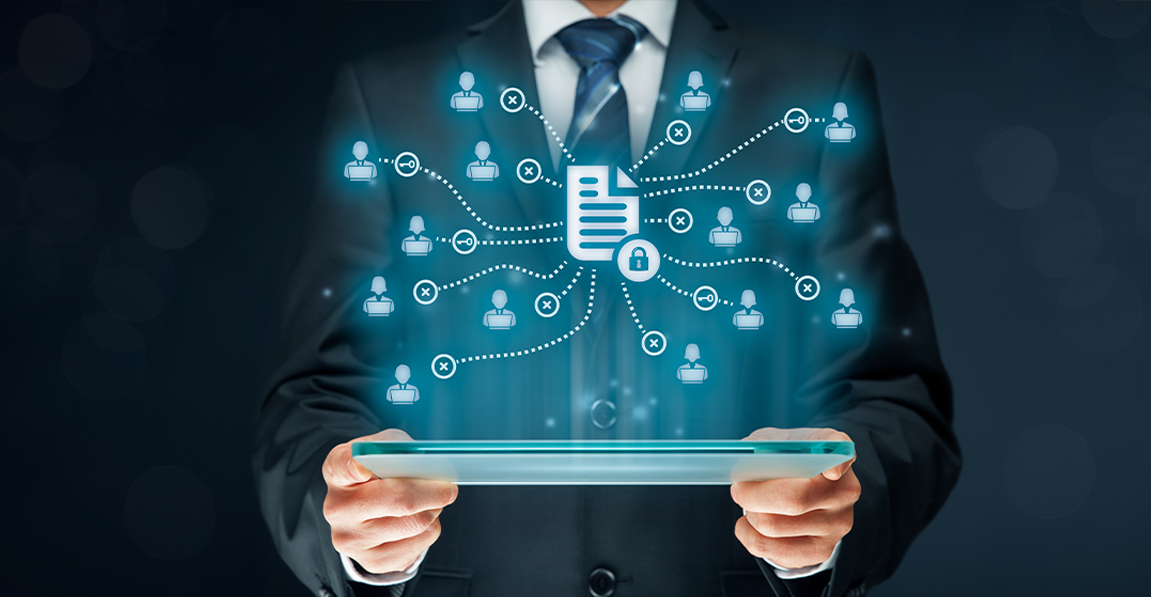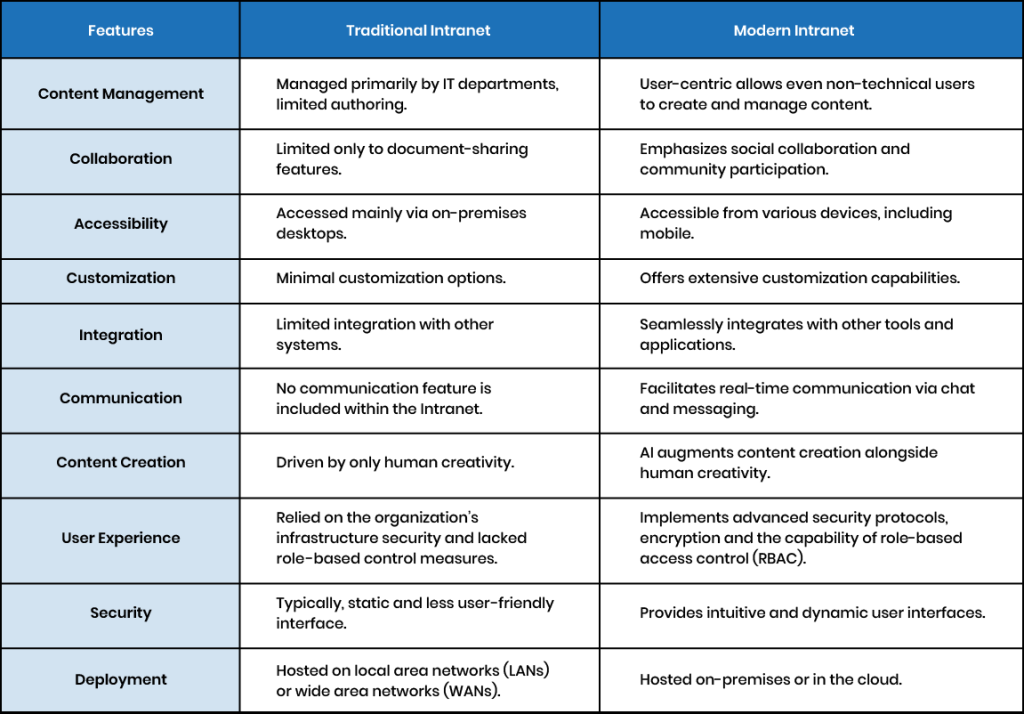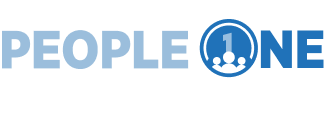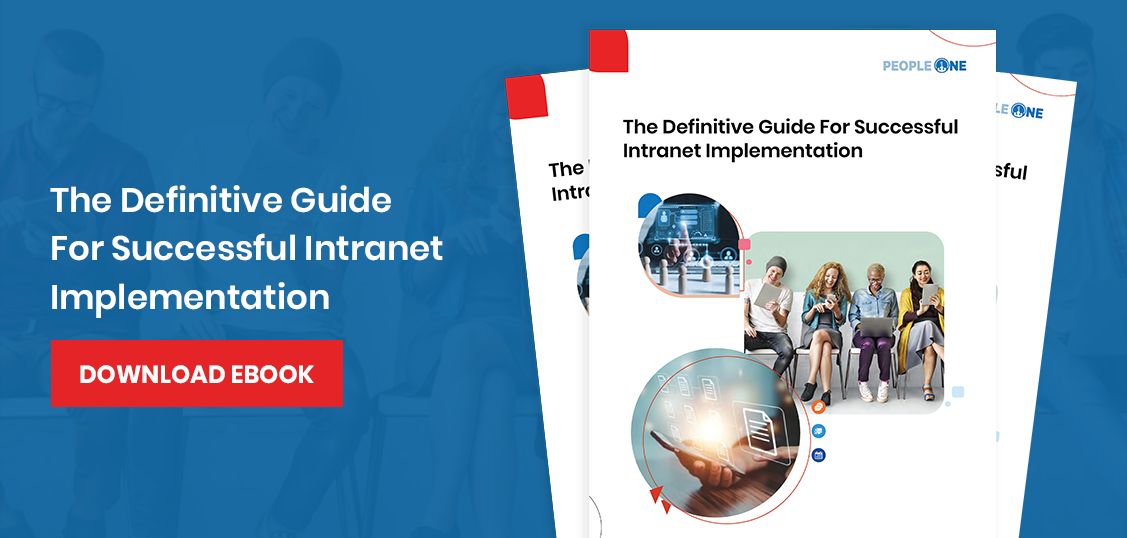Resources > Blogs
What Is a “Modern” Intranet? How Intranets Have Changed in Two Decades
10-Apr-2024
Renita Joan

Intranets have come a long way since first emerging in the 1990s. What started as simple internal websites for document sharing have evolved into sophisticated digital platforms that are now at the core of the modern digital workplace.
What is a Modern Intranet?
A modern intranet is an interactive, social, and personalized platform that empowers employees to connect, collaborate, and access critical information. Unlike its predecessors, it’s accessible from anywhere, and on any device with an internet connection.
A Journey Through Time: The History and Evolution of Intranets

Early Intranets (1990s)
The early days of intranets, dating back to the mid-90s, saw the emergence of internal websites using internet technology within private networks. These rudimentary platforms, often referred to as static pages or electronic bulletin boards (EBBs), revolutionized internal communication by enabling companies to share information, documents, and applications more efficiently within the organization.
While groundbreaking at the time, their functionalities were limited to simple document sharing and access to internal resources. Early intranet systems were overseen by engineering and IT departments and provided limited capabilities for content creation or social interaction. While basic, these first-generation intranets improved internal communications compared to paper memos and newsletter distribution.
Second Generation Intranets (Early 2000s)
As the internet continued to evolve, so did intranets. By the early 2000s, intranets had transformed into enterprise web or corporate portals, offering expanded capabilities and tools. Features such as wikis and blogs made cross-departmental collaboration easy, while advanced search and content tagging mechanisms helped users to navigate and find relevant information within the intranet.
Web 2.0 Intranets (2010s)
Web 2.0 brought about a new era of intranets, social intranets, digital workplaces, and enterprise collaboration platforms. These platforms embraced social and mobile capabilities, introducing features like user profiles and commenting functionalities. With optimization for mobile devices, employees could access the intranet anytime, anywhere.
Intranets evolved to foster social collaboration, empowering users to generate and oversee content, engage in communities, customize pages, and create forms autonomously, reducing dependence on IT departments.
Intranets evolved to foster social collaboration, empowering users to generate and oversee content, engage in communities, customize pages, and create forms autonomously, reducing dependence on IT departments.
Modern Intranets (2020 and Beyond)
Intranets have evolved into modern digital employee experience (DEX) platforms in recent years, offering a comprehensive suite of tools and capabilities. These modern intranets serve as centralized hubs for communication, collaboration, and resource management, integrating social features, enterprise search, document management, and project management tools. They cater to the diverse needs of employees, enabling interaction across the organization and empowering teams to work more efficiently. Modern intranets also leverage AI (Artificial Intelligence) to become even more intelligent and user-friendly, ultimately fostering increased productivity and innovation. AI is reshaping internal communications and HR tasks by facilitating content creation, managing documents, and streamlining new hires’ onboarding process.
Key Features of Traditional Intranet vs Modern Intranets

Moving Forward
The journey of intranets from their inception to the modern digital workplace is a testament to the ever-evolving nature of work. As organizations navigate the challenges and opportunities of the digital age, modern intranets will continue to play an indispensable role in creating connected, collaborative, and efficient workplaces for the future. Intranets serve as central hubs for information, resources, and tools, fostering engagement, productivity, and a sense of community within the organization. As we look to the future, the evolution of intranets will continue, adapting to the changing needs and technologies of the ever-evolving digital workplace.
About PeopleOne
PeopleOne is your gateway to a modern intranet experience.
PeopleOne, a SharePoint-based intranet, seamlessly connects your workforce with intuitive collaboration tools, streamlined access to information, and personalized user experiences, empowering your organization to thrive in the digital age.
PeopleOne leverages SharePoint’s comprehensive suite of features, including role-based access control, encryption, compliance management, and seamless integration with Microsoft 365 security services. If you are a Microsoft 365 leveraging organization and aim to maximize SharePoint usage while providing your employees a modern intranet experience, PeopleOne is an ideal choice.
Talk to our PeopleOne – Modern Intranet experts today and revolutionize your digital workplace experience.
Discover how PeopleOne can transform your organization
Request a DemoHR and Comms Guide: How to Turn Your Intranet into a Highly Engaged and Productive Platform
Download Ebook









